Introduction to Ice Diving
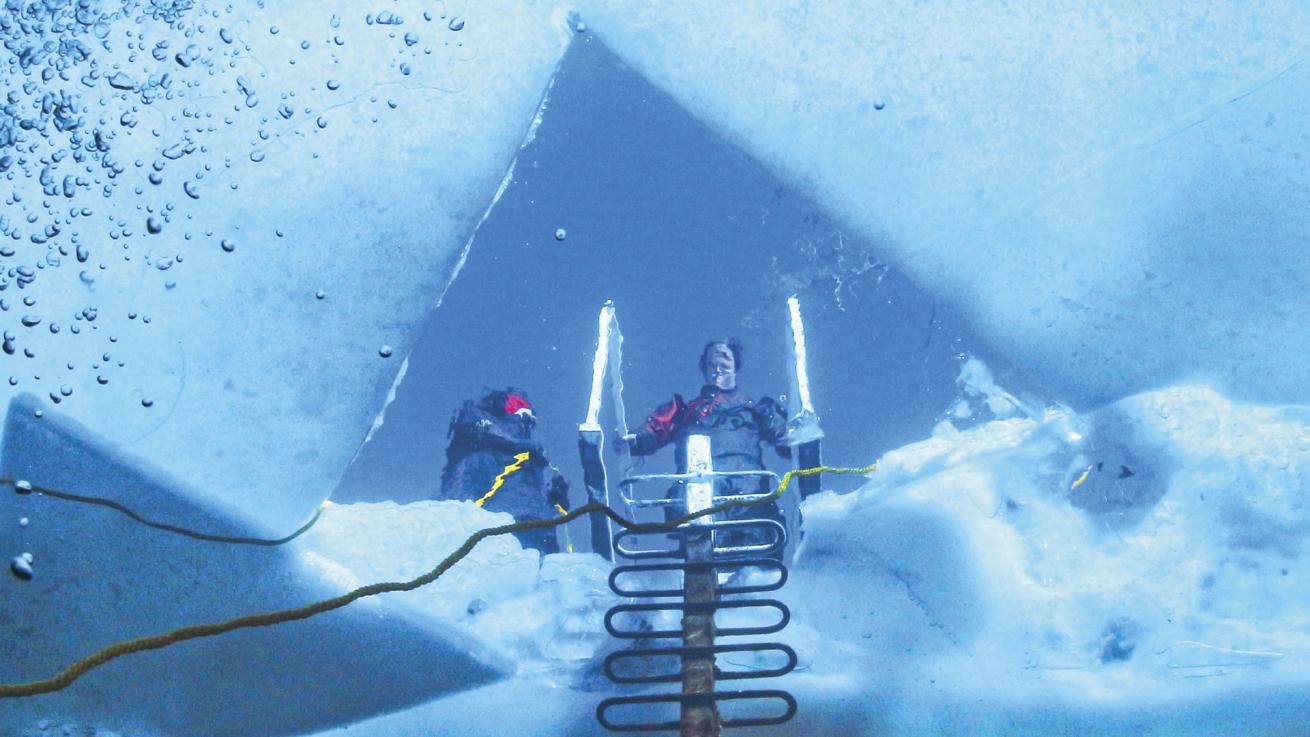
Rich SynoweicA drysuit-outfitted diver peers through a triangle-shaped entry point on the icy surface of White Star Quarry in Ohio.
"When else would humans get a chance to see how life exists under the ice, in a quarry, in the winter?"
So asks Josh Lean, an ice diving instructor based in Pittsburgh, Pennsylvania, who caught the cold-weather bug when he moved up north from Florida, adjusting from wearing a wetsuit to a drysuit in order to keep diving throughout the winter months. He loves to dive at White Star Quarry in Gibsonburg, Ohio, where spotting bluegill, trout and bass beneath more than a foot of ice is an experience unlike any other.
As far as adventure goes, ice diving has few rivals. The niche sport has an almost cult following among some of the most passionate and experienced divers and dive pros across the United States, who brave the wintry elements for a chance to experience the quiet and calm of the (usually very clear) waters at frozen lakes, quarries and wreck sites—not to mention locales farther afield such as the North and South poles, the Swiss Alps, and the White Sea. Bodies of water that don’t always freeze completely, such as larger lakes, are also available to divers with ice diving certifications. As these divers can attest, it’s technically challenging, endurance-enhancing, and in many ways, very cool—both figuratively and literally.
“Getting under the ice with no current, no wind—everything settles to the bottom completely undisturbed,” Lean explains. “There’s 30 to 35 feet of viz,” which can amount to a good 10 to 15 feet greater than during the summer months at White Star Quarry.
“Under the ice we have unbelievable visibility, just incredible visibility,” echoes Rich Synowiec, CEO of Divers Incorporated and a PADI course director based in Ann Arbor, Michigan. Synowiec describes himself as one of the “very, very, few guys whose clients ice dive for fun,” as opposed to rescue divers who are required to certify for their jobs.
Related Reading: Penguins 101: Nature's Fanciest Seabirds
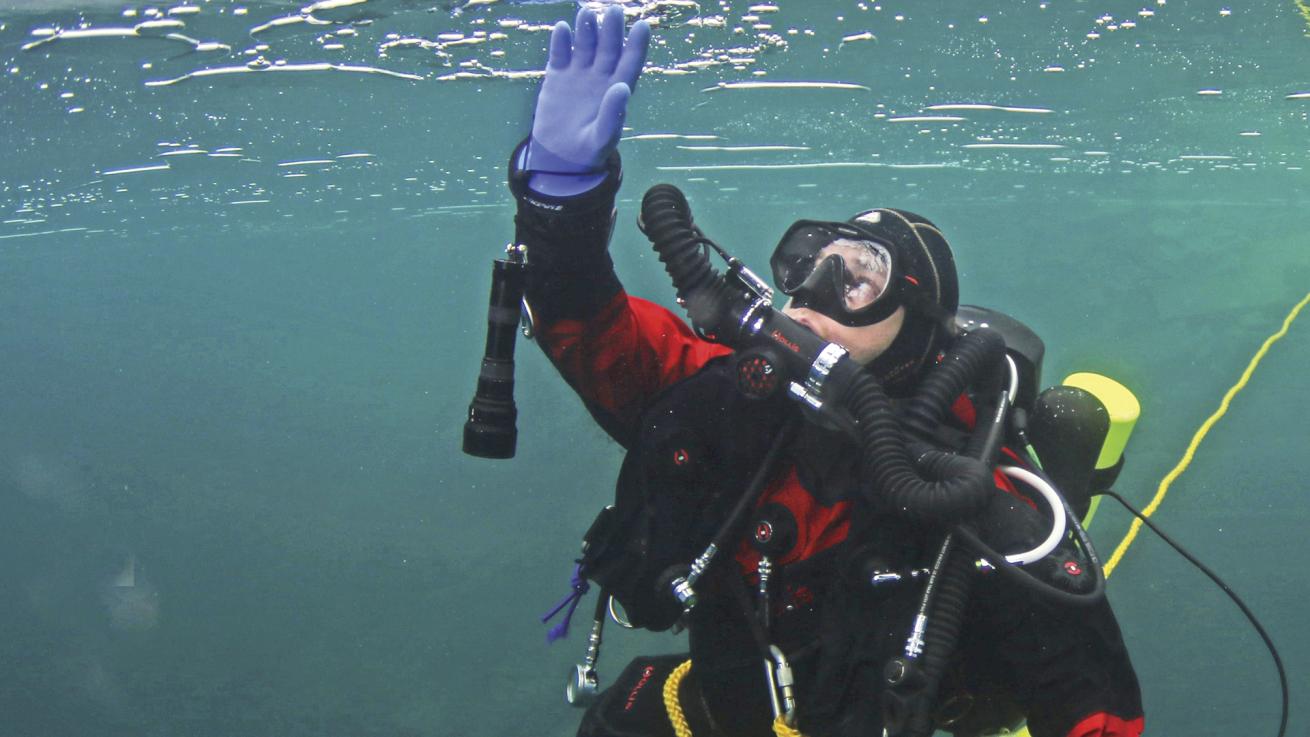
Rich Synowiec
Breaking Through
Ice diving, which requires being tethered to a tender above the surface and using tools to access the water, also gives divers an opportunity to become familiar with new equipment while adding new skills to their repertoire.
“By far the coolest piece of dive equipment you could ever hope to have is a chainsaw,” says Synowiec.
Using an ice auger or a chainsaw, divers drill three holes into the ice, then cut a triangular block out of the surface to gain access to the water. Augers, corkscrewlike tools typically used for ice fishing, can be powered by hand, electricity or gas and can be easier to wield than a chainsaw as they are about the size of a weed whacker. For ice that’s more than 12 inches thick, less efficient (and less costly) hand augers might not be up to the task.
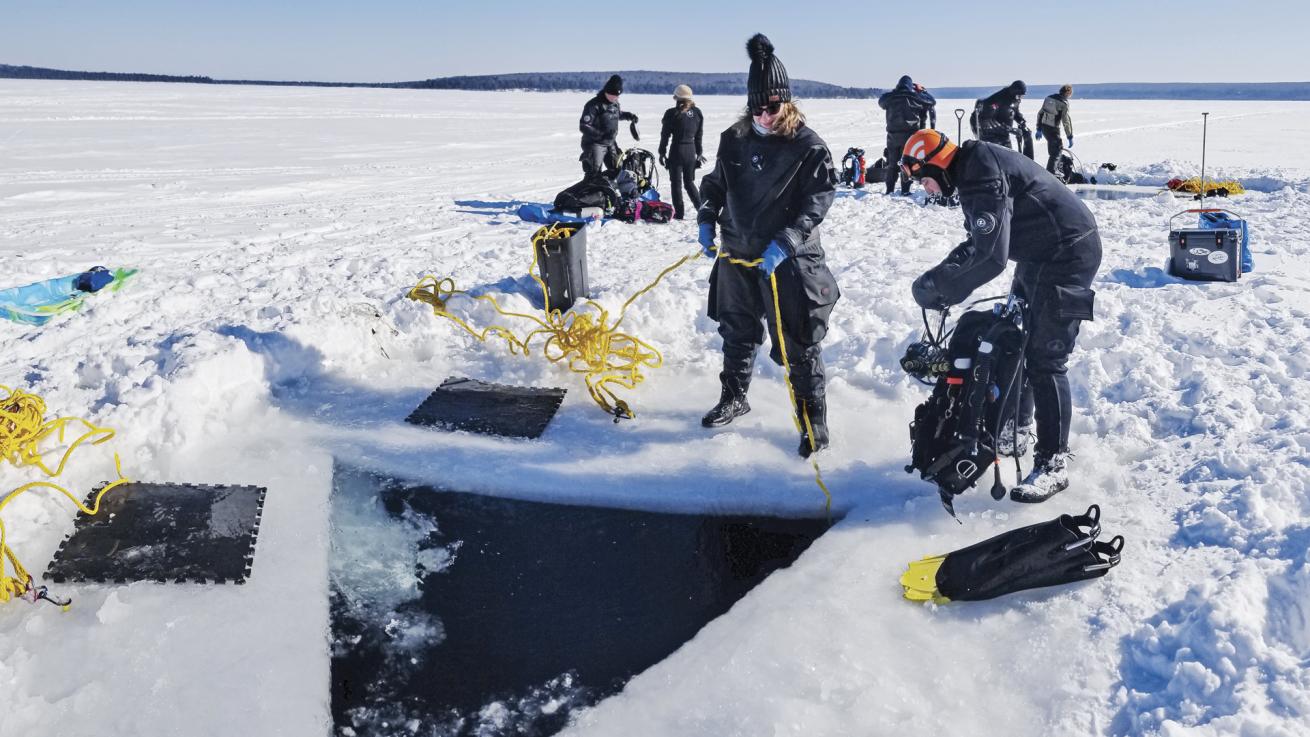
Rich SynowiecTenders on the surface are integral to the safety of divers tethered under the ice of Michigan’s lakes.
Phillip Graf, owner of Omni Divers, taught an ice diving course for years at Payette Lake in McCall, Idaho, where the ice can be 3 feet thick. “We used vegetable oil instead of car oil in the chainsaw, because you don’t want to spill oil into the water where you’re going to be diving,” says Graf, describing his routine for setting up a safe learning environment. Graf and his team cut triangular holes in the ice for the descent, then mark the surface of the ice 50 feet and 100 feet from the center of the hole. This approach allows the instructor to be aware of the depth of the water under the ice and also creates a reference for divers to know when they reach the outermost limit of the diving area.
“At that location, it’s about 4 feet of water under the ice toward the shore and 35 feet deep at the other end,” Graf explains. After making the surface measurements, “I have everybody take a shovel and scoop down to the ice. So now you have trails through the snow where there’s just ice. When the sun comes in and it bears down on the ice, you can see it when you look up through the ice [from underwater].”
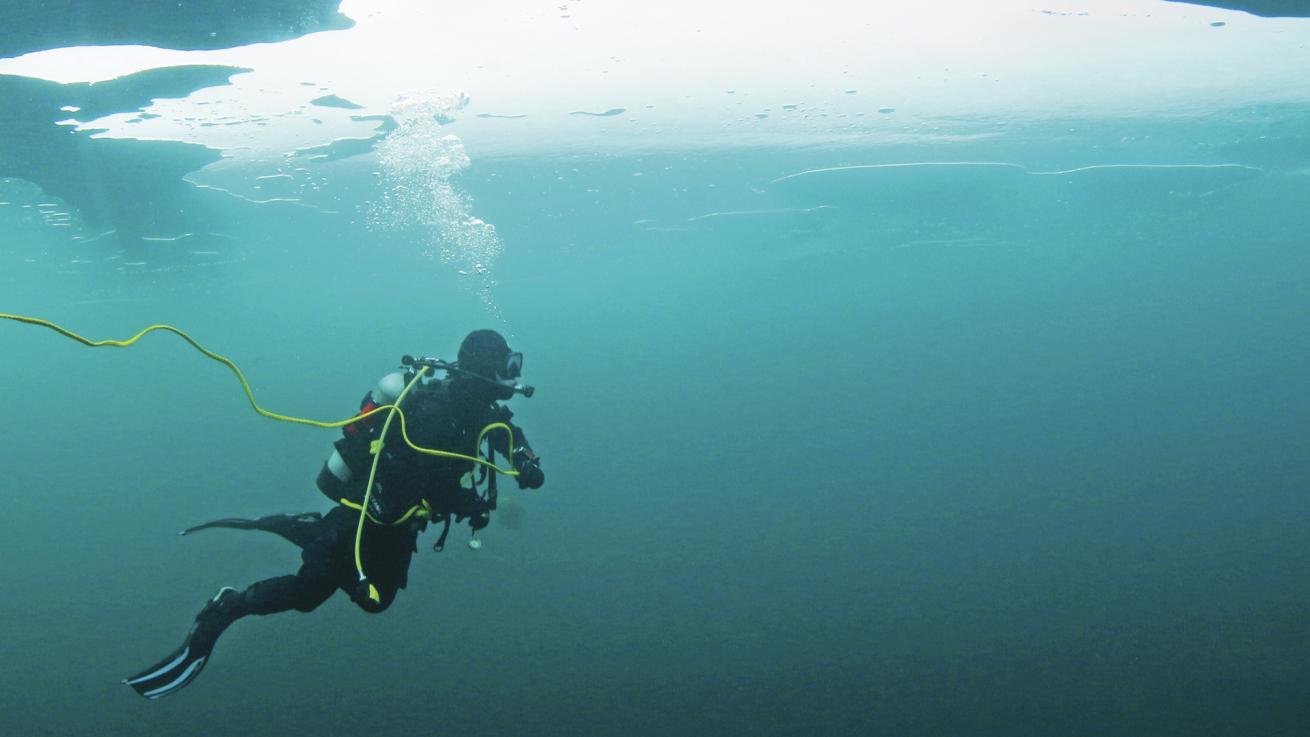
Rich SynowiecA diver plunges beneath the ice.
The PADI Ice Diver specialty course involves learning to shovel the circular outline of a wheel through the snow to let sunlight stream down through the ice in a clear pattern that can be recognized from below the surface. Additionally, shoveled spokes radiating out from the hole in the center of the wheel pattern provide divers with further guidance and light. The idea is that divers should never reach the outermost ring of the wheel. If the radius from the center of the circle is 100 feet, Graf says, then the line tethered to the divers should only go out 85 feet. It’s a challenging, time-consuming setup that requires enough time and people to achieve, but Graf says it’s worth learning.
“In case you get lost underwater, in case the line you’re attached to is removed from you, you can follow [the wheel pattern] back to the hole,” Graf says. The helpers on the surface, also known as tenders, “hook you up and take care of you and help you maintain dexterity.”
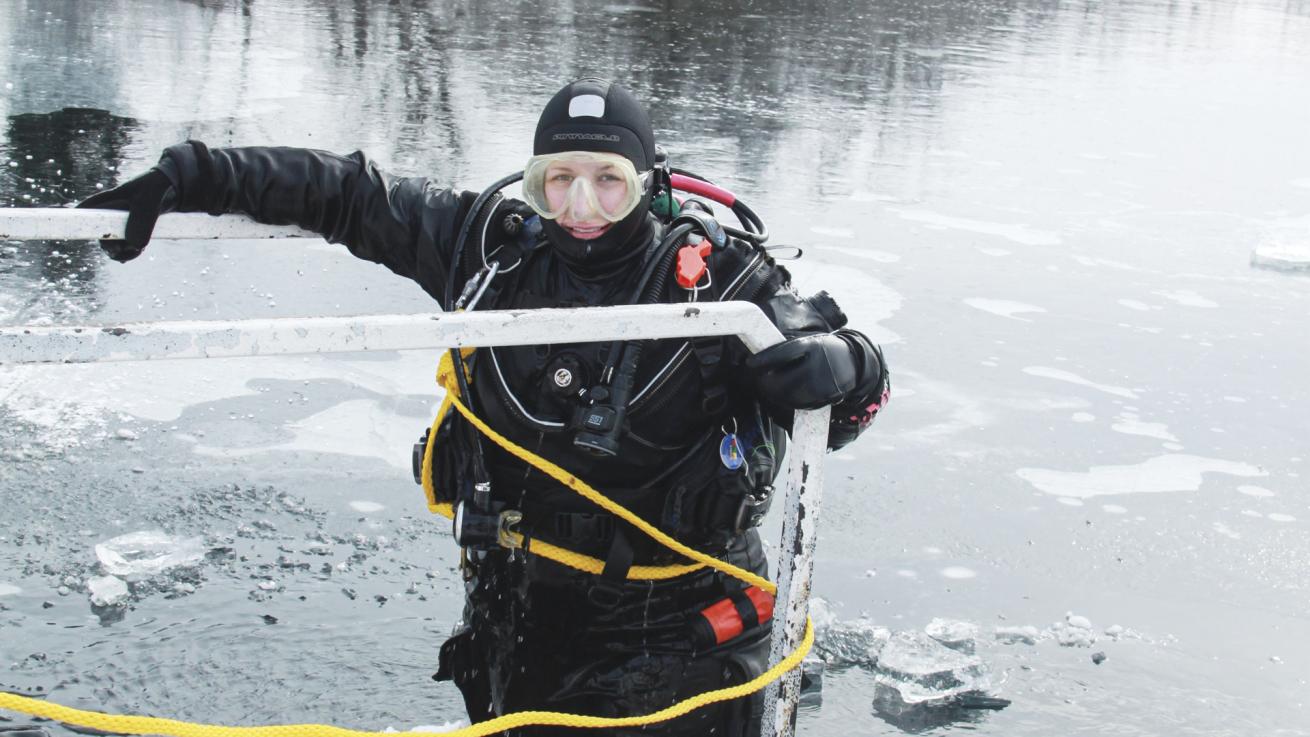
Rich SynowiecCold, snowy conditions make for great diving at White Star Quarry
Cold Comfort
An affinity for ice diving “starts with a couple of things in our world: Number one is a drysuit,” says Synowiec.
January through March is the best time to ice dive in most parts of the northern United States and Canada, so drysuit diving helps keep divers as warm and nimble as possible. Ice divers can dive in wetsuits, but need to be prepared for the time spent topside in the cold winter air. The water temperature tends to rise the farther you descend under the ice, but “if you’re going to be in a wetsuit, think beyond the dive,” Synowiec says. “Bring hot water, coats.”
Related Reading: Lessons for Life: Dangers of Diving With a Cold
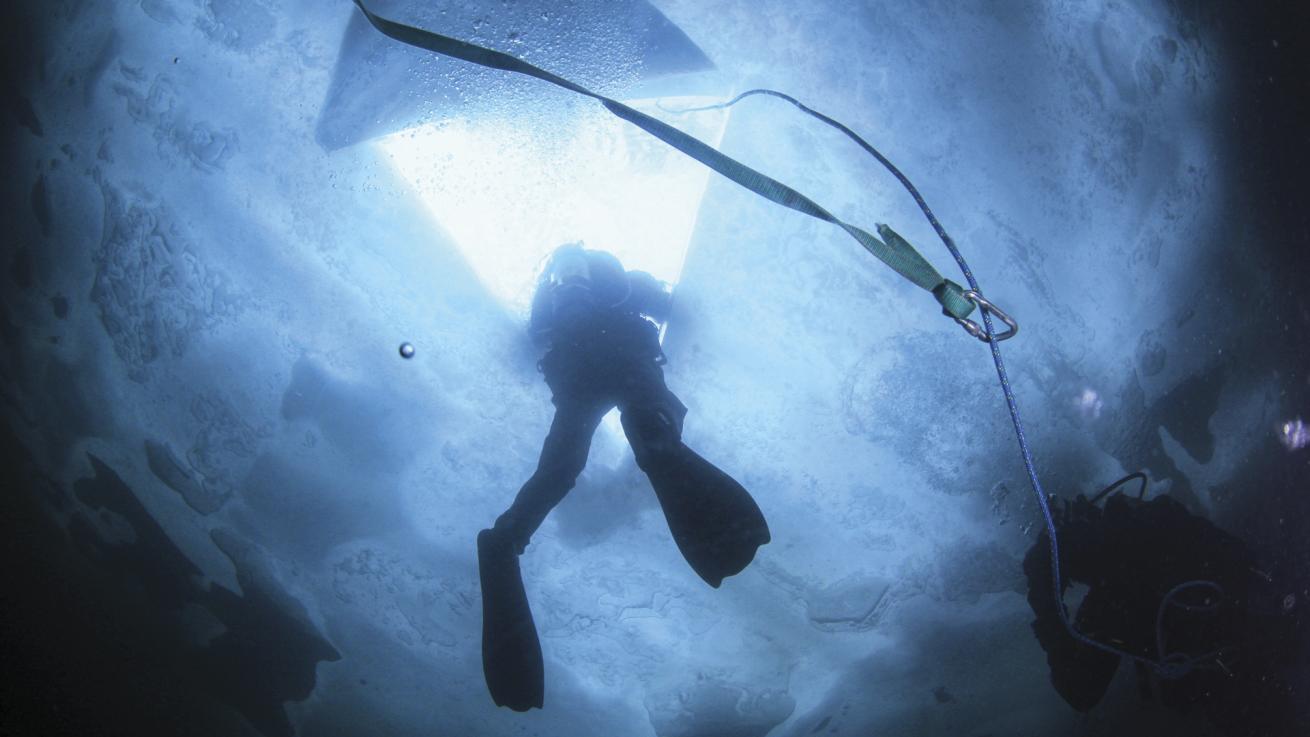
Rich SynowiecLake Superior ice near Munising in Michigan’s Upper Peninsula.
Trainee divers rotate through their dives with a low instructor-to-student ratio. In Lean’s classes, divers spend intervals of 20 minutes under the ice and 10 minutes above the ice, repeated three times. It’s a full-scale production to get everyone out for an ice dive class, Lean says, because a total of seven people (including tenders keeping an eye on things from the surface) is needed for just two students.
Lean highly recommends wearing gloves when diving, and some divers even wear heated undergarments to keep hypothermia at bay. “I want you to be as comfortable as you can be in the water” before giving ice diving a try for the first time, Lean advises, in order to avoid adding further discomfort to a challenging class in which new skills are taught in extreme conditions.
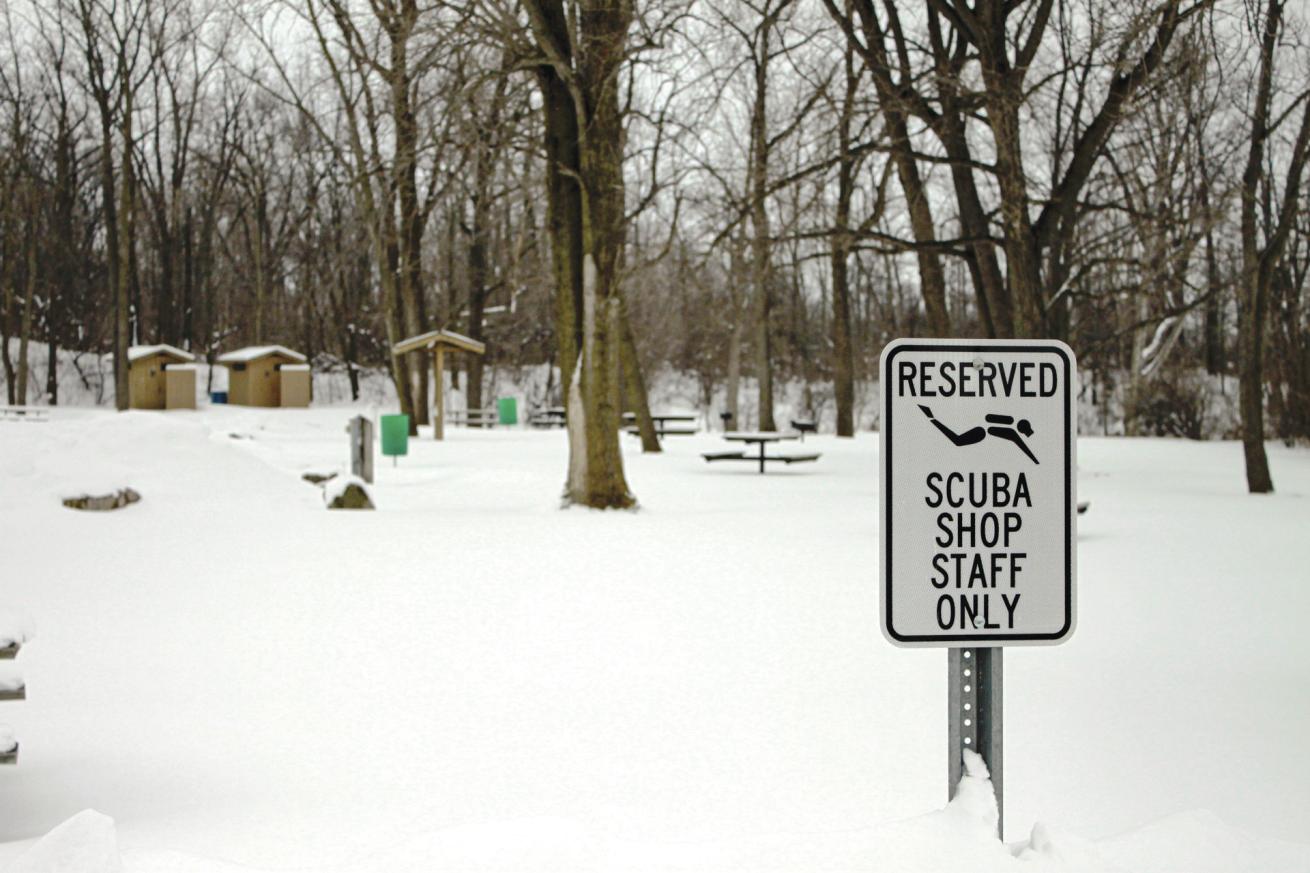
Rich Synowiec
“Having appropriate thermal protection, a redundant air source, and a harness are the biggest specialized items for ice diving,” says Lean, who dives sidemount, although a single tank with a bailout or a twinset would also suffice.
As the ice diving community well knows, all of the preparation is worth it when you get underwater—and when you warm up with a hot slice of pizza afterward with your dive buddies.
“Why ice dive?” Graf says. “New experiences, different experiences, working on your limits, being able to dive in [new] areas. It’s an expansion of your abilities.”
Related Reading: The Risks of Forgoing Drysuit Training
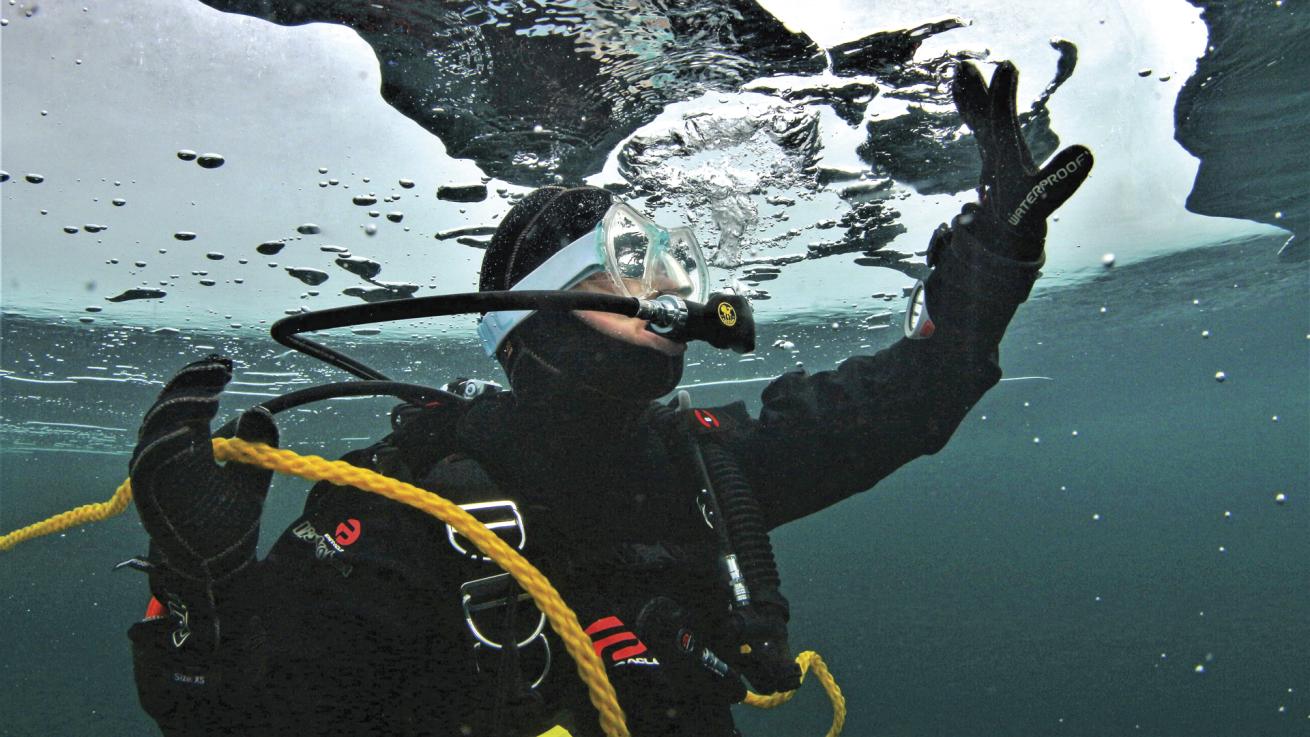
Rich SynowiecA diver examines the underside of the ice at White Star Quarry, a popular year-round training site in Gibsonburg, Ohio
Tips From The Experts
Diving With A Drysuit
“Five drysuit dives is not enough,” says instructor Josh Lean. “Do it for a season, then we’ll get you [under the ice] next winter.”
Check The Forecast
The sunnier it is outside, the better divers will be able to see the contrast of the wheel pattern dug into the snow.
Look For A Flexible Class
Instructors like Rich Synowiec understand that ice diving requires ice. He will register students for a class, do the lecture component, then have the option to roll over their deposit to another class if the weather doesn’t cooperate.
Where To Start
Staying Warm
Appropriate preparation is necessary, starting with warm layers of clothing for surface time. Synowiec keeps a box of old coats and ski jackets for people who come from warmer climes to take his class.
To conserve body heat and energy, Graf plans ahead with his group before getting into the water. “We set up the pattern [on the ice], then we have lunch in the car, then we decide who goes first, second, third,” he says.
Basic Equipment
In addition to a drysuit, wear dry or neoprene gloves, a hood, and multiple layers of socks and undergarments. Research beforehand to make sure your regulator can handle extreme temps: sealing around the first stage and construction that’s built for the cold are preferred. Ask your local dive shop for advice about what models have performed best in similar situations.
To avoid freeflow in the extreme conditions that come with ice diving at high elevation, Graf recommends divers get their first and second stage underwater before taking a first breath. “As long as you don’t exhale too hard and your regulator stays in your mouth, you’re fine,” he says.
Other items more closely associated with rock climbing come in handy: After being paired with a tender on the surface, divers are tethered together and harnessed with a carabiner to a line stretching through the hole in the ice. The carabiner is hooked twice to a harness that goes under the BCD—not to the BCD itself, in case the BCD gets loose.
Building Skills
Many instructors prefer advanced open water certification before diving under ice, in caverns, or any other overhead environment. Divers should never enter an overhead environment without first receiving the proper training.
“For the PADI Ice Diver specialty, you need to make three dives to get certified,” explains Graf. He asks students to try to scratch upward through the ice with a knife while underwater to demonstrate that ice diving “doesn’t work like it does in the movies”— without something to stand on for purchase, divers don’t make much of a dent in the ice. A big part of the course is learning to navigate the ice overhead and communicate with the tenders on the line.
Visit your local dive shop or ask your instructor for advice on choosing ice diving gear, and learn more about the PADI Ice Diver course.










